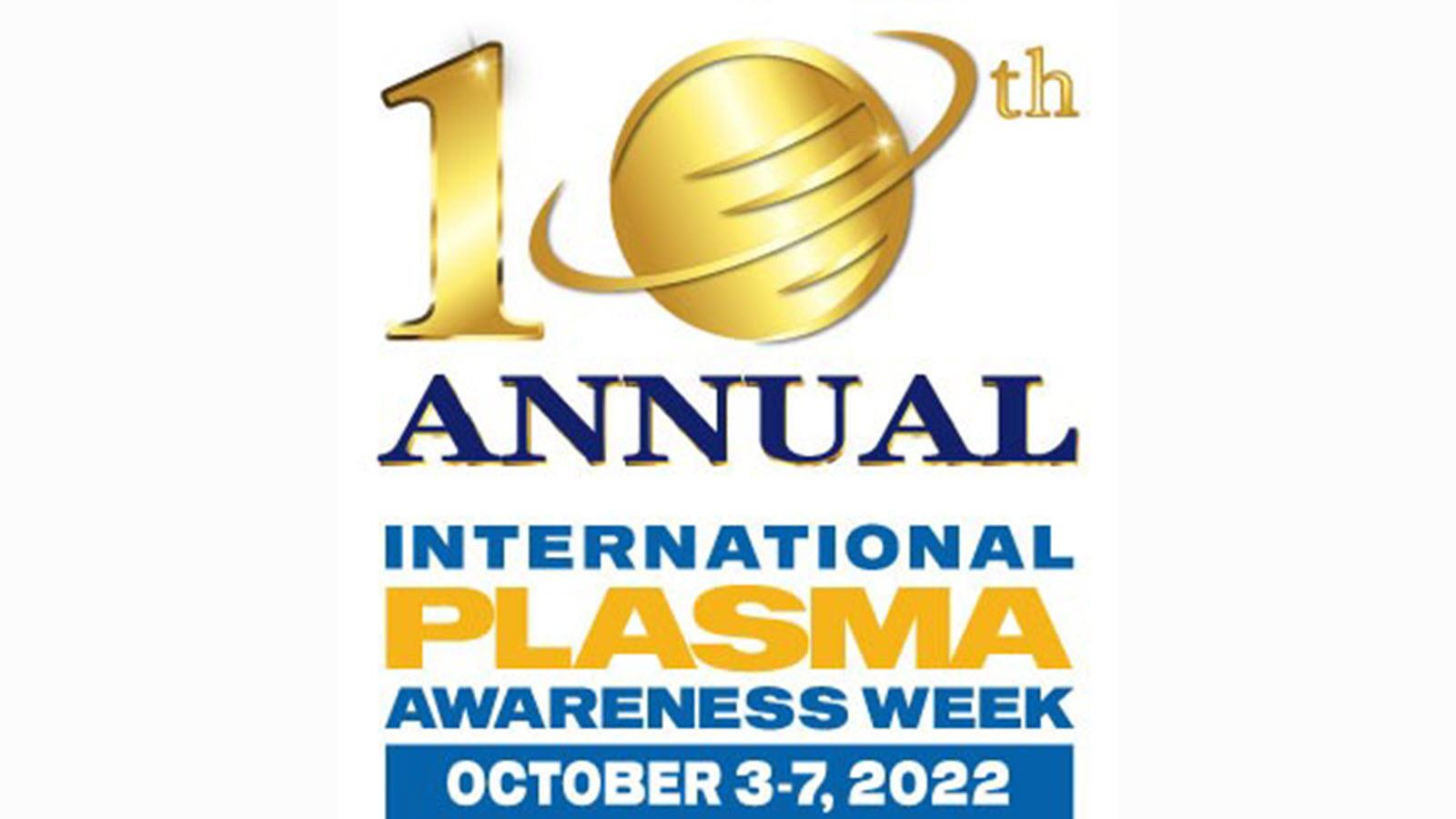This year International Plasma Awareness Week turns 10 years old – uniting the industry and commemorating a decade of effort with three core goals:
- Raise global awareness about source plasma collection.
- Recognize the contributions of plasma donors to saving and improving lives.
- Increase understanding about lifesaving plasma protein therapies and rare diseases.
As we recognize the decade that IPAW has spanned, we share 10 facts about the amazing act of donating plasma.
- Plasma is a clear yellow liquid that suspends blood cells and helps transport antibodies, nutrients and waste through the body. This cell-free component of blood is 92% water and contains proteins, electrolytes, lipids (fats) and carbohydrates.
- Source plasma is the starting material used to manufacture lifesaving therapies. It’s collected from healthy, voluntary donors and used solely for further manufacturing into final therapies.
- Plasmapheresis is an automated process that separates plasma from red blood cells and other cellular components of blood, which are then returned to the donor.
- Plasma donation is regulated in the United States by the U.S. Food and Drug Administration (FDA) and in Europe by the European Medicines Agency (EMA) and national regulatory authorities.
- Plasma proteins needed for medical therapies include albumin, gamma globulin and anti-hemophilic factor (a protein that helps blood clot).
- Plasma therapies also treat patients getting medical care for trauma, shock, burns and other emergencies.
- For those who have rare and inherited chronic conditions, plasma-based medicines often replace important proteins the patient lacks.
- When a person donates plasma, it takes the body about 48 hours to replenish the volume donated.
- Plasma protein therapies are high-impact as they can increase life expectancy, improve quality of life and reduce life-threatening complications.
- Plasma donors do the amazing and help save lives. Across the world, thousands of people need therapies made from plasma to survive. Learn more about the Giving = Living awareness campaign in the U.S.



